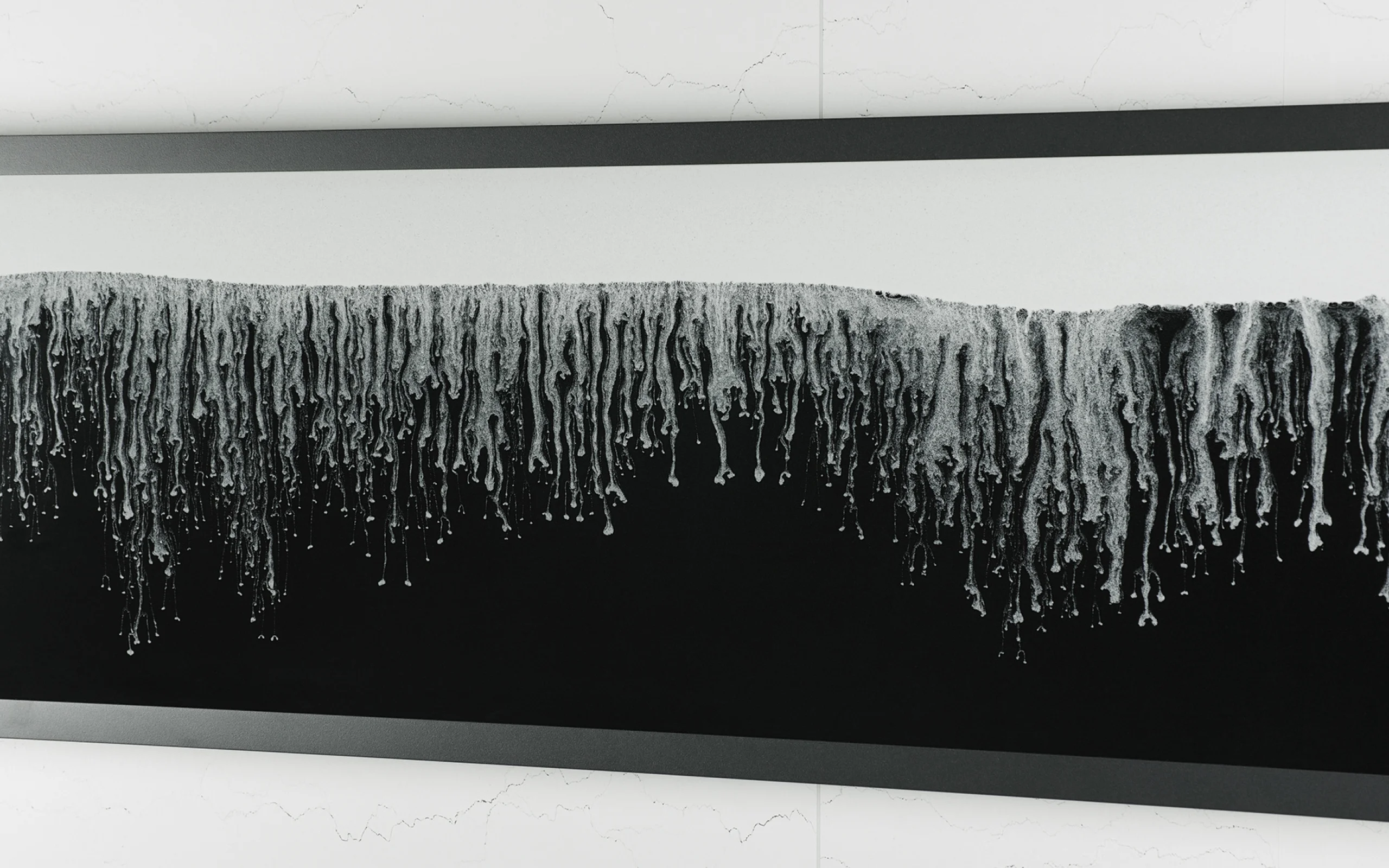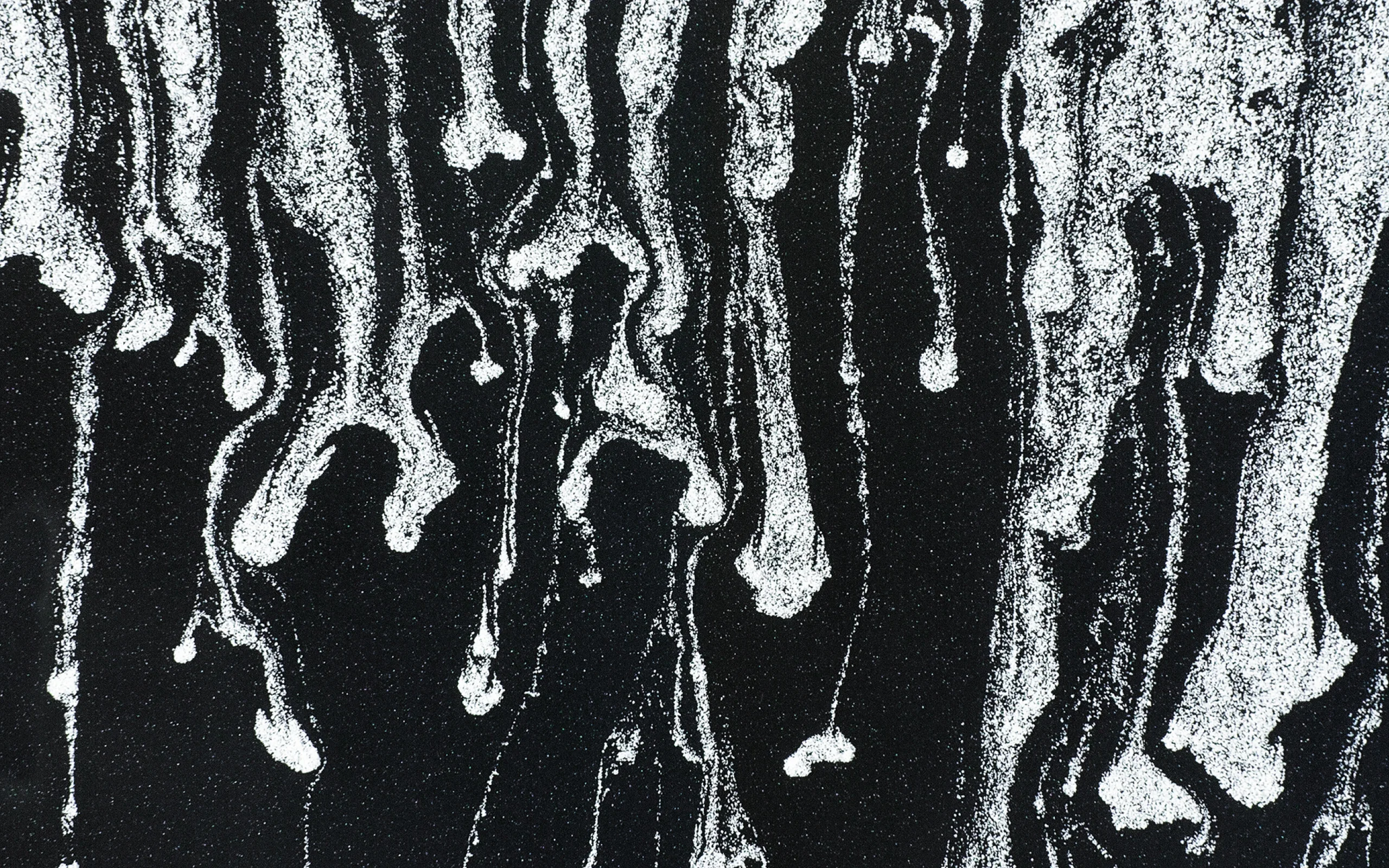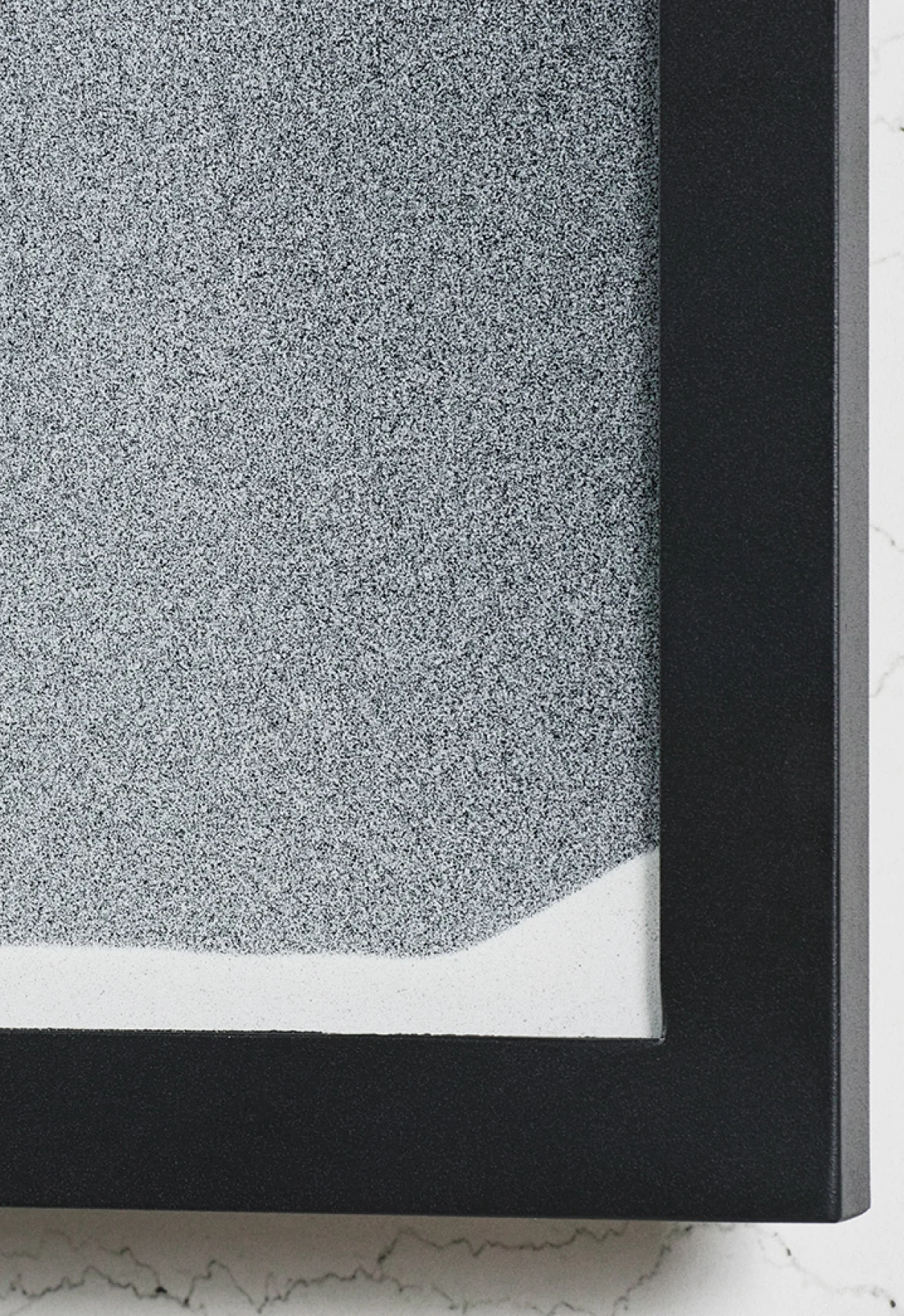
PROJECT
Fluidity / Evolutional Creativity
流体の性質と形の関係を探求し、自然界の流れが生み出す美しさをデザインに取り入れた。

WHY
生物と無生物の間に
あるものとは。
社会は急激に変わっています。成長の限界と言われた1972年から50年が経った今でも、我々人類はまだ成長し続けています。生物多様性の崩壊を食い止めるための変化や持続可能な社会を保つためのアクションは、もう時間的な猶予が全く残されていない状況と言っていいでしょう。社会を変える人がもっとたくさん必要だと、心から感じます。どうすれば、そのような人を増やせるのでしょうか。そういえば私達は、物が社会を変えることを「進化する」とよく言っています。社会を変えることが進化だと言うなら、私達はもっと生物の進化から社会の進化を生むためのプロセスを学ぶことができるのではないでしょうか。

美に対する人の感覚は、流れの中にある生命力の有無を無意識に捉える。
音楽における和音やバッハの平均律などを考察しても、人は規則性と不規則性のはざまにあるゆらぎに美しさを感じるようだ。散る桜、消える花火、生と死の間の儚さに、人が美しさを感じるのは、そのような刹那の変化の中にこそ生命の源である「流れ」を見るからなのかもしれない。
美は、絶対性ではなく、不安定と安定の間に現れるゆらぎなのだ。鴨長明は「ゆく河の流れは絶えずして、しかももとの水にあらず。」と、変化を繰り返す自然を捉えた。自然が見せる美しさは、対流の間にある両義的な美意識。それは即ち、デザインすることと、デザインしないことの間に 生まれてくるものでもある。

生きることは流動すること。
自然の根本には、不安定な状態から安定した状態に移行しようとする性質がある。例えばダイヤモンドのように、安定した対称性を持つ結晶は確かに美しいし、そうした完全性が人の心を動かすことは多々ある。だからと言って、不完全な状態が醜く、完全な状態が美しいという安直な問題で片付けることはできない。なぜなら安定性と同じくらい、不安定性は美にとって欠かせない要素だからだ。
例えば、動きのない水面よりも、波や飛沫がある水面にこそ、人は美しさを感じるのはなぜだろう。液体に何かを放り込んだ時、不安定に陥った流体は、その反動で急速に 安定性を求める。そして安定状態に近づくにつれて、活性が失われていき、ついに水平な対称性を取り戻した時に、静止する。ランスロット・ホワイトは、「不安定から安定に至るまで流動することこそが生命だ」と定義した。この静止した対称性とは、死に他ならない。そもそも生物が生きるということが、対称性のない不完全な生から、安定した死の状態への移行だと言える。この定義は、アラン・チューリングが生命の表面に現れる縞やパターンを、対流の計算から数式化したことと符合するようで興味深い。

美に対する人の感覚は、流れの中にある生命力の有無を無意識に捉える。
音楽における和音やバッハの平均律などを考察しても、人は規則性と不規則性のはざまにあるゆらぎに美しさを感じるようだ。散る桜、消える花火、生と死の間の儚さに、人が美しさを感じるのは、そのような刹那の変化の中にこそ生命の源である「流れ」を見るからなのかもしれない。
美は、絶対性ではなく、不安定と安定の間に現れるゆらぎなのだ。鴨長明は「ゆく河の流れは絶えずして、しかももとの水にあらず。」と、変化を繰り返す自然を捉えた。自然が見せる美しさは、対流の間にある両義的な美意識。それは即ち、デザインすることと、デザインしないことの間に 生まれてくるものでもある。

HOW
生命の本質は流動にある。

人工物のデザインにおいても、技術の進歩、人の趣向性や時代のコンテクストの変容によって、モノは絶えず進化と淘汰を繰り返しています。多様性を前提とした種の発達は、生物の進化の形によく似ています。常に発明は人の進化を補おうとしているようにも感じられます。より速く、より楽に、そんな哲学によって進められてきたデザインは、進化しようとする人類の本能ではないでしょうか。もし生物の進化とデザインが充分に似ているなら、そのプロセスをよく理解し、発明やデザインに応用することでイノベーションを起こしやすくなるはず。進化思考は、そのような考え方から生まれた、自然から学ぶ新しい創造教育のための手法です。
黒と白の間。
黒い四角のガラスの中に、白い砂がある。何の変哲もないモノクロームの構成が、流れの 生命力の中で無限の階調を見せる。時には渦になり、分岐し、せき止められ、群れ、崩れ、そして最後に、停止する。生命力とは、こういった流れのことなのかもしれない。
ギンザ・グラフィック・ギャラリーにおいて、個展「ノザイナーかたちと理由」を開催しました。「もし全てのデザインが自然の模倣なのだとしたら。あるいはデザインという行為そのものが、自然の進化を無意識にシミュレーションする行為だとしたら」という仮説から、「デザインは、物の生物学だ」という考えに基づき、人工物と自然物を対比させて、かたちの奥にある理由や、デザインを発想するための方法に迫る展示を行いました。
WILL
あらゆる発想法を統合する進化思考の誕生。
小さな実験的展示から始まった進化思考は、いま日本最大級の規模の自動車会社・不動産会社やアパレルのグローバル企業の経営者など、徐々に賛同者に応援されながら広がりつつあります。(参考記事:
INFORMATION
- What
- Fluidity / Evolutional Creativity
- When
- 2016
- Where
- Ginza, Tokyo, Japan
- Client
- Scope
- Installation / Space Design
CREDIT
- Artist
- NOSIGNER (Eisuke Tachikawa)
- Photo
- Kunihiko Sato









